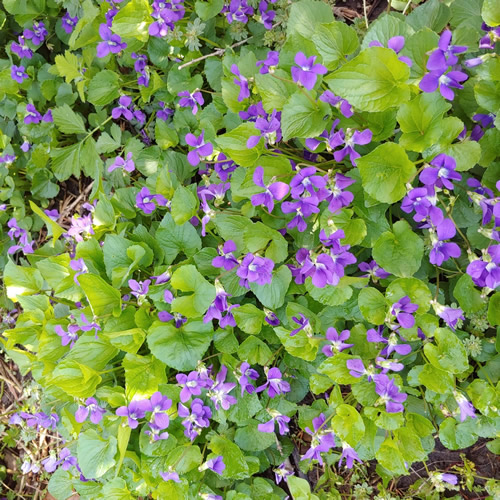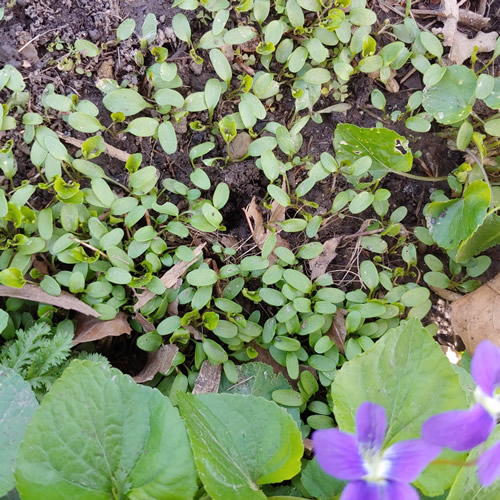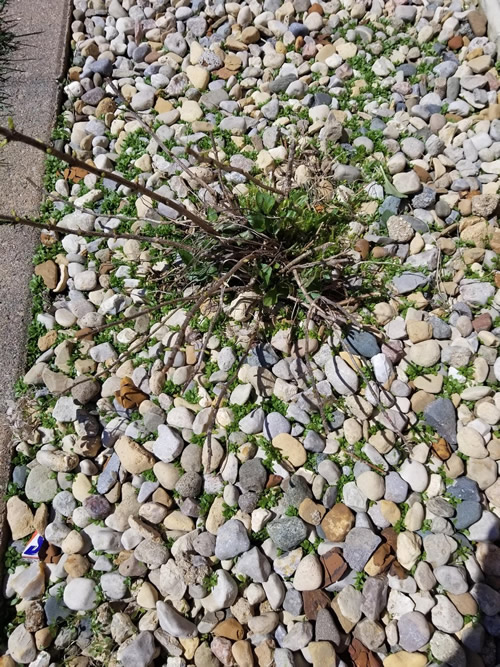Issue 2, May 5, 2020
Violets in Landscape Beds
I have a love/hate relationship with violets. In the right setting, they can be attractive and make a nice groundcover. However, they are prolific seed producers and can take over areas. A plant becomes a weed only when it is growing where it is not wanted. I find that I want it in some areas, but not others.
Common violet (Viola spp.) is considered a prevalent lawn weed by many. This cool-season perennial spreads by seeds and by creeping rhizomes. The leaves are kidney-shaped to broadly oval, with a heart-shaped base and a pointed tip. The margins are typically toothed. Leaf size is 2 to 4 inches. Stems are low growing typically but can reach 12 inches in height. They arise from a basal crown. Many colors of flowers exist from white to blue to purple to yellow. Cultivated types exist as well. Violets bloom early in the spring and prefer moist, shady, fertile sites. Blue violet is the state flower of Illinois.
Years ago, my husband talked me into transplanting violets from one area of our property to another containing a windbreak. At the time, I thought it was insane, but I must admit they grow quite well there and look nice. A dense stand of violets in bloom can be striking. Additionally, they prevent other less attractive weeds from growing there.

However, one person’s flower is another person’s weed and not everyone is fond of common violet. The setting often determines violet’s fate. In lawns, violets disrupt that uniform appearance, desirable by many. In landscape beds, a few violets may be pretty, but the numbers will steadily increase with time making this species wear out its welcome fast.
When that occurs, violet plants can be dug by hand. Seedlings, which are abundant now in central Illinois, can be easily removed with your fingers or other favorite weeding tool. Unwanted plants should be removed before they produce seed as spread can be aggressive.

The peskiest weeds are those who grow unnoticed within other plants. I have had violet grow within a rose bush, while a recent client had it growing within her hydrangea. Successful weeds are sneaky like that. Removal can then be quite difficult in these situations. I have had the best luck with a dandelion fork but an old knife will work well too. Removal must be done carefully so that injury does not occur to the desirable plant. If not all of the weed is removed, the process will need to be repeated until the food reserves are eventually starved. Continue to monitor for new growth.
Alternatively, violet leaves could be carefully painted with glyphosate, a non-selective, postemergent herbicide. Roundup is one trade name but there are several available. Avoid herbicide contact with the plant it is growing within as injury can result. A couple of applications could be needed to achieve complete control. Triclopyr may provide greater control of violet than glyphosate, however, product labels may not allow for its use in certain landscape situations. If a herbicide is used, be sure to carefully read and follow all label directions.
What about violet seedlings? There are a few options. Again, hand removal can be employed once they grow large enough to easily grasp with your fingers. A hoe or winged weeder can be used as well. Mulch works well to keep weed pressure down. In areas covered with rocks or gravel, it could be that more gravel is simply needed. To kill any existing growth, the area could be covered with black plastic for several days to block needed light. Spot treatments with glyphosate could be employed. Be sure to keep the spray off desirable ornamentals. For added protection, plants could be temporarily covered with plastic bags or buckets during the application. To prevent future seedlings, a preemergent herbicide such as DCPA or trifluralin can be used early in the spring. First check the label to be sure that all of your ornamental species are listed. Again, carefully read and follow all label directions.
In certain situations, such as that of my recent client’s, who had one lone hydrangea growing in rock filled with violet seedlings, it may be easier to transplant any ornamentals first. I suggested she consider moving the hydrangea so she could then deal with the violets. Once the violets are controlled, then the hydrangea could be moved back. She was considering removing the rock, installing landscape fabric, and then returning the rock with additional rock to more adequately cover the soil. Depending on the size of the area, this could be a lot of work as rocks are heavy! Of course, the long-term success would be highly dependent on the ability to control the source of the seeds, which is the mother plant hiding within the hydrangea.

Author:
Michelle Wiesbrook